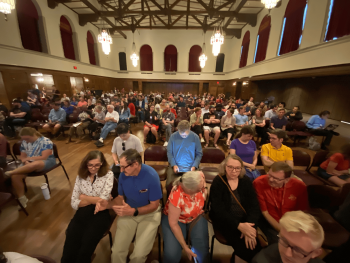
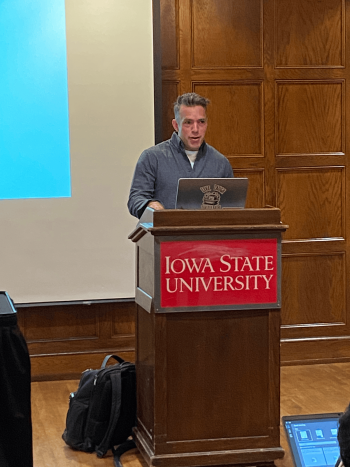
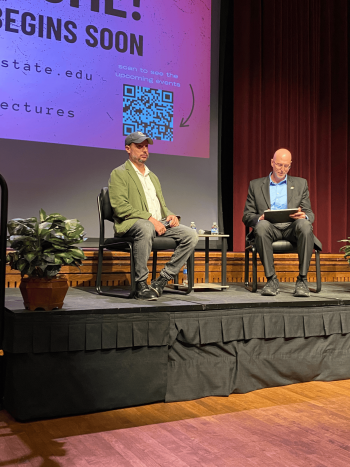
AMES, Iowa — September 14, 2025 — For three days in mid-September, the Iowa State University campus became a hub of discussion, collaboration, and discovery at the ISU-NISS Conference on AI & Statistics, a landmark event co-hosted by the National Institute of Statistical Sciences (NISS). From September 12–14, scholars, industry experts, students, and the public gathered to examine the rapid advances occurring at the intersection of artificial intelligence and statistical science. Through keynote addresses, invited talks, poster sessions, and special events, the conference highlighted both the power and responsibility that come with deploying AI in real-world contexts.
Pre-Conference Workshop on Reinforcement Learning
The conference opened on Friday morning with a pre-conference workshop that set the tone for the weekend. Titled “Emerging Ideas and Applications in Reinforcement Learning,” the session was organized by the NISS New Researchers Network, thanks in large part to the leadership of Jason B. Cho, a graduate student in Statistics & Data Science at Cornell University and a member of the NISS New Researchers Network’s executive committee. Led by Eric Laber of Duke University, the workshop took place in the Oak Room of the Memorial Union and introduced participants to the rapidly evolving field of reinforcement learning, which underpins applications ranging from robotics to personalized medicine. Laber guided attendees through recent theoretical advances and walked them through case studies that illustrated both the promise and the pitfalls of the method. He emphasized how reinforcement learning can revolutionize decision-making in uncertain environments but cautioned that without careful statistical oversight, these tools risk becoming black boxes that are difficult to interpret and validate. Attendees described the workshop as both accessible and rigorous, blending technical detail with practical insight.
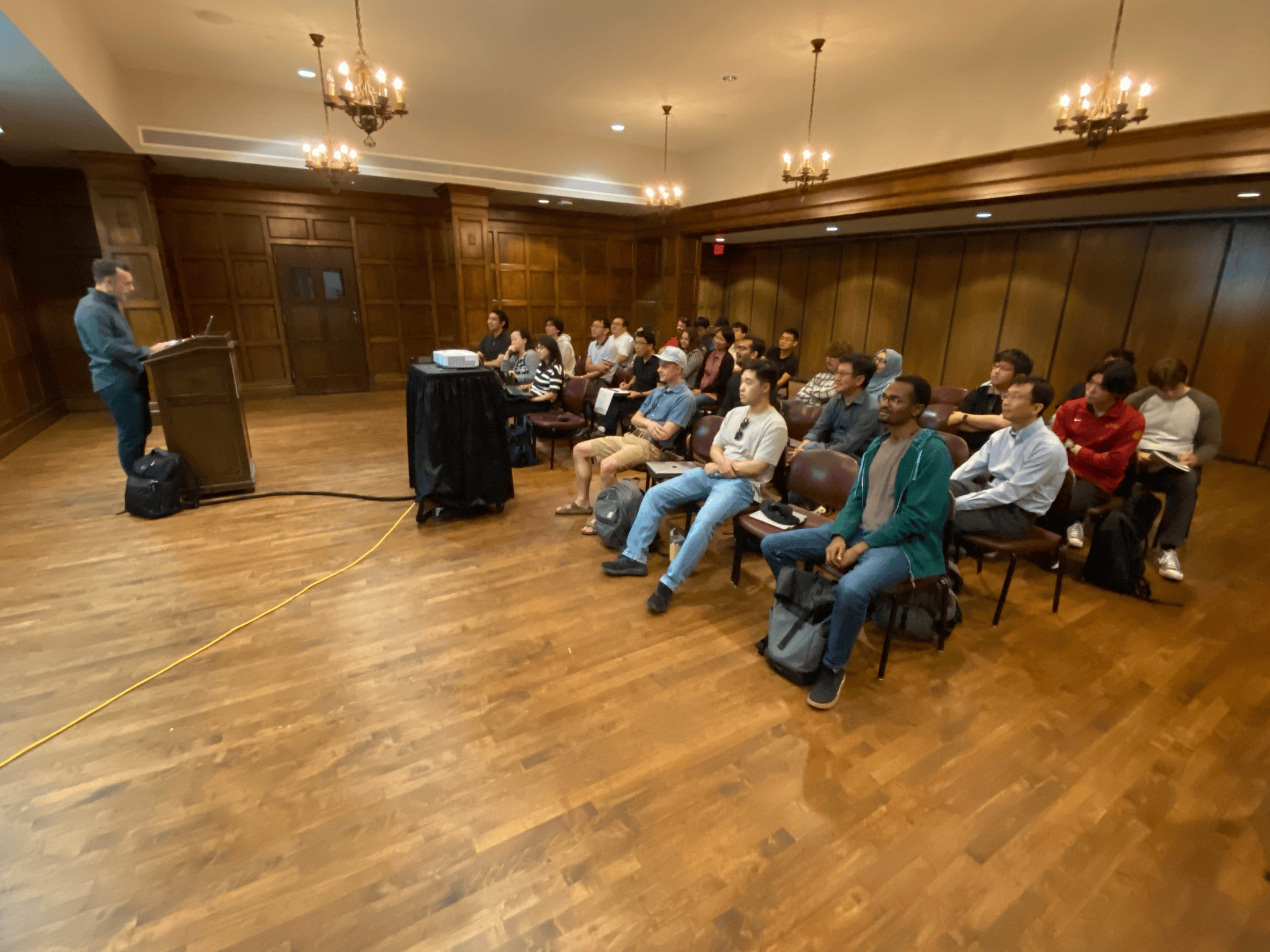
Friday Sessions and a Conversation with Nate Silver
Following the workshop, the formal program began Friday afternoon with an opening session on Multidimensional Statistical Imaging, featuring Moo Chung of the University of Wisconsin–Madison and Yang Chen of the University of Michigan. Their talks demonstrated how high-dimensional imaging data, such as those from medical scans or environmental monitoring, present unique challenges for modeling but also enormous opportunities for advancing both health care and climate science. Later in the afternoon, the focus turned to Online Statistical Inference and Advances in Streaming Data, with presentations by Lan Luo of Rutgers University and Shubhanshu Shekhar of the University of Michigan. This session addressed one of the most pressing challenges in modern data science: how to process and learn from vast amounts of data that arrive continuously, rather than in fixed datasets. Both speakers highlighted innovative approaches that allow algorithms to adapt in real time without sacrificing accuracy or reliability.
Friday evening brought one of the conference’s most widely anticipated events — a public conversation with Nate Silver, author and political forecaster, who filled the Great Hall of the Memorial Union with attendees from both the conference and the broader Ames community. Silver spoke about his new book On the Edge: The Art of Risking Everything and reflected on the evolving role of statistics in political forecasting, sports analytics, and the design of AI systems. His remarks stressed the importance of balancing quantitative modeling with human judgment and highlighted how rapidly changing data environments are testing traditional methods. Audience members engaged him with questions on predictive accuracy, public trust in models, and the future of election forecasting in the age of AI. The evening underscored the broader societal relevance of the conference, connecting highly technical discussions to issues of public interest and policy.
Saturday: Sequential Decision-Making, Causal ML, and Forensic AI
Saturday’s sessions began with Advancements in Sequential Decision-Making, where Lan Wang of the University of Miami and Eric Laber returned to discuss the theory and practice of making decisions that unfold over time. Their talks explored applications in clinical trials, adaptive learning, and personalized treatment strategies, demonstrating the interplay between theory and urgent real-world problems. The morning continued with a session on Causal Machine Learning and Reasoning, led by Yang Ni of Texas A&M University and Bryon Aragam of the University of Chicago. Both highlighted how AI systems can move beyond mere prediction to identifying cause-and-effect relationships, a crucial step for ensuring that machine learning contributes to actionable knowledge rather than misleading correlations.
The afternoon featured a poster session in which graduate students, postdoctoral researchers, and early-career scholars presented cutting-edge work to senior researchers and peers. This session was a highlight for many attendees, offering a space where emerging voices could showcase innovative approaches and receive feedback from established leaders in the field. Following the posters, the conference turned to Machine Learning and Artificial Intelligence in Forensic Science, a session that drew wide interest. Heike Hofmann of the University of Nebraska–Lincoln, Alex Hagen of the Pacific Northwest National Laboratory, and Chris Saunders of South Dakota State University demonstrated how AI tools are being developed for applications ranging from fingerprint and handwriting recognition to forensic pattern analysis. These talks emphasized the stakes of applying AI in domains where errors can have profound consequences for justice and public trust.
Sunday: Survey Statistics and Spatial AI
Sunday morning closed the conference with two sessions that captured both methodological innovation and applied urgency. The first, AI in Survey Statistics, included presentations by Serina Chang of the University of California, Berkeley, and Trent D. Buskirk of Old Dominion University. Their talks examined how AI can modernize survey research at a time when traditional response rates are declining, focusing on methods for integrating big data sources, adaptive survey design, and machine learning for nonresponse adjustment. The final session, AI and Spatial Statistics, featured Christopher K. Wikle of the University of Missouri and Lei Zou of Texas A&M University. Both spoke on geospatial modeling in the era of AI, highlighting applications in climate science, disaster response, and environmental monitoring. Their work emphasized how statistical methods ensure that spatial predictions are not only precise but also interpretable and trustworthy, a theme that ran throughout the weekend.
Closing Reflections and Recognition of New Researchers Network
Across its three days, the ISU-NISS Conference on AI & Statistics balanced technical exploration with societal engagement. Sessions revealed the power of AI to transform medicine, science, and industry, while repeatedly underscoring the importance of statistical methods to ground these tools in rigor and fairness. The pre-conference reinforcement learning workshop, the technical talks, the vibrant poster session, and the public conversation with Nate Silver each played a role in shaping a multifaceted event that brought clarity to a complex and fast-evolving field. By the time attendees dispersed on Sunday afternoon, the conference had made clear that advancing AI responsibly is as much about nurturing cross-disciplinary collaboration as it is about developing new algorithms.
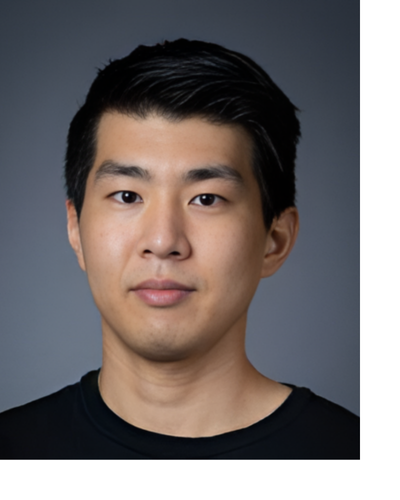 A special acknowledgment to the NISS New Researchers Network, whose contributions underscored the importance of supporting early-career statisticians. In particular, Jason B. Cho, a graduate student of Statistics & Data Science at Cornell University and a member of the Network’s executive committee, played a key role in organizing the pre-conference reinforcement learning workshop. His efforts reflected the Network’s mission of empowering new researchers to take leadership roles in shaping the future of the field. Organizers emphasized that this workshop not only set the intellectual tone for the conference but also showcased the vitality and initiative of the next generation of statistical leaders.
A special acknowledgment to the NISS New Researchers Network, whose contributions underscored the importance of supporting early-career statisticians. In particular, Jason B. Cho, a graduate student of Statistics & Data Science at Cornell University and a member of the Network’s executive committee, played a key role in organizing the pre-conference reinforcement learning workshop. His efforts reflected the Network’s mission of empowering new researchers to take leadership roles in shaping the future of the field. Organizers emphasized that this workshop not only set the intellectual tone for the conference but also showcased the vitality and initiative of the next generation of statistical leaders.
